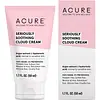What's inside
What's inside
 Key Ingredients
Key Ingredients

 Benefits
Benefits

 Concerns
Concerns

 Ingredients Side-by-side
Ingredients Side-by-side

Zinc Oxide
Cosmetic ColorantWater
Skin ConditioningCaprylic/Capric Triglyceride
MaskingSqualane
EmollientGlycerin
HumectantCetearyl Alcohol
EmollientMethyl Dihydroabietate
Sorbitan Olivate
EmulsifyingCoco-Glucoside
CleansingCetyl Palmitate
EmollientPolyglyceryl-3 Polyricinoleate
EmulsifyingCaprylyl/Capryl Glucoside
CleansingNymphaea Alba Flower Extract
Skin ConditioningAcacia Senegal Gum
MaskingEthyl Ferulate
AntioxidantXanthan Gum
EmulsifyingSodium Gluconate
Skin ConditioningLecithin
EmollientSodium Palmitoyl Proline
Skin ConditioningPolyhydroxystearic Acid
EmulsifyingEthylhexylglycerin
Skin ConditioningPhenoxyethanol
PreservativeIsostearic Acid
CleansingZinc Oxide, Water, Caprylic/Capric Triglyceride, Squalane, Glycerin, Cetearyl Alcohol, Methyl Dihydroabietate, Sorbitan Olivate, Coco-Glucoside, Cetyl Palmitate, Polyglyceryl-3 Polyricinoleate, Caprylyl/Capryl Glucoside, Nymphaea Alba Flower Extract, Acacia Senegal Gum, Ethyl Ferulate, Xanthan Gum, Sodium Gluconate, Lecithin, Sodium Palmitoyl Proline, Polyhydroxystearic Acid, Ethylhexylglycerin, Phenoxyethanol, Isostearic Acid
Water
Skin ConditioningPersea Gratissima Oil
Skin ConditioningPrunus Armeniaca Kernel Oil
MaskingGlyceryl Stearate Citrate
EmollientGlycerin
HumectantGlyceryl Stearate
EmollientPrunus Amygdalus Dulcis Oil
Skin ConditioningCetyl Alcohol
EmollientGlyceryl Laurate
EmollientSimmondsia Chinensis Seed Oil
EmollientGlyceryl Undecylenate
EmollientOenothera Biennis Oil
EmollientCarthamus Tinctorius Seed Oil
MaskingPotassium Sorbate
PreservativeXanthan Gum
EmulsifyingOlea Europaea Fruit Oil
MaskingSodium Levulinate
Skin ConditioningCitric Acid
BufferingHelianthus Annuus Seed Oil
EmollientSodium Phytate
Tocopherol
AntioxidantHypericum Perforatum Oil
EmollientAnthemis Nobilis Flower Water
MaskingAspalathus Linearis Leaf Extract
Skin ConditioningCalendula Officinalis Flower Extract
MaskingChamomilla Recutita Flower Extract
MaskingEuterpe Oleracea Fruit Extract
Punica Granatum Extract
AstringentRosa Canina Fruit Extract
AstringentRubus Fruticosus Fruit Extract
AstringentArgania Spinosa Kernel Oil
EmollientIsomalt
HumectantAlcohol
AntimicrobialGardenia Jasminoides Meristem Cell Culture
AntioxidantEchinacea Angustifolia Extract
MoisturisingMarrubium Vulgare Meristem Cell Culture
Skin ProtectingChlorella Vulgaris Extract
Skin ConditioningPhospholipids
Skin ConditioningLeuconostoc/Radish Root Ferment Filtrate
AntimicrobialHyaluronic Acid
HumectantArgania Spinosa Callus Culture Extract
Skin ConditioningLecithin
EmollientUbiquinone
AntioxidantSodium Benzoate
MaskingWater, Persea Gratissima Oil, Prunus Armeniaca Kernel Oil, Glyceryl Stearate Citrate, Glycerin, Glyceryl Stearate, Prunus Amygdalus Dulcis Oil, Cetyl Alcohol, Glyceryl Laurate, Simmondsia Chinensis Seed Oil, Glyceryl Undecylenate, Oenothera Biennis Oil, Carthamus Tinctorius Seed Oil, Potassium Sorbate, Xanthan Gum, Olea Europaea Fruit Oil, Sodium Levulinate, Citric Acid, Helianthus Annuus Seed Oil, Sodium Phytate, Tocopherol, Hypericum Perforatum Oil, Anthemis Nobilis Flower Water, Aspalathus Linearis Leaf Extract, Calendula Officinalis Flower Extract, Chamomilla Recutita Flower Extract, Euterpe Oleracea Fruit Extract, Punica Granatum Extract, Rosa Canina Fruit Extract, Rubus Fruticosus Fruit Extract, Argania Spinosa Kernel Oil, Isomalt, Alcohol, Gardenia Jasminoides Meristem Cell Culture, Echinacea Angustifolia Extract, Marrubium Vulgare Meristem Cell Culture, Chlorella Vulgaris Extract, Phospholipids, Leuconostoc/Radish Root Ferment Filtrate, Hyaluronic Acid, Argania Spinosa Callus Culture Extract, Lecithin, Ubiquinone, Sodium Benzoate
Ingredients Explained
These ingredients are found in both products.
Ingredients higher up in an ingredient list are typically present in a larger amount.
Glycerin is already naturally found in your skin. It helps moisturize and protect your skin.
A study from 2016 found glycerin to be more effective as a humectant than AHAs and hyaluronic acid.
As a humectant, it helps the skin stay hydrated by pulling moisture to your skin. The low molecular weight of glycerin allows it to pull moisture into the deeper layers of your skin.
Hydrated skin improves your skin barrier; Your skin barrier helps protect against irritants and bacteria.
Glycerin has also been found to have antimicrobial and antiviral properties. Due to these properties, glycerin is often used in wound and burn treatments.
In cosmetics, glycerin is usually derived from plants such as soybean or palm. However, it can also be sourced from animals, such as tallow or animal fat.
This ingredient is organic, colorless, odorless, and non-toxic.
Glycerin is the name for this ingredient in American English. British English uses Glycerol/Glycerine.
Learn more about GlycerinLecithin is a term for a group of substances found in the cell membranes of plants, animals, and humans. They are made up of mixture of phospholipids.
This ingredient has emollient and emulsifying properties.
As an emollient, lecithen helps soften the skin and creates a barrier to keep moisture in.
As an emulsifier, it also helps prevent water and oil ingredients from separating. Lecithin can also help ingredients be better absorbed by the skin.
This is because the phospholipids in lecithin produce liposomes. Liposomes help other ingredients get through the skin barrier.
Depending on the source of this ingredient, lecithin may not be fungal acne safe. This is because some sources of lecithin come from soybean oil, which may feed the malassezia yeast that feeds fungal acne.
We recommend reaching out to the brand you are purchasing from to inquire about the source of their lecithin.
Some other names for this ingredient include soy lecithin and deoiled soy lecithin.
Learn more about LecithinWater. It's the most common cosmetic ingredient of all. You'll usually see it at the top of ingredient lists, meaning that it makes up the largest part of the product.
So why is it so popular? Water most often acts as a solvent - this means that it helps dissolve other ingredients into the formulation.
You'll also recognize water as that liquid we all need to stay alive. If you see this, drink a glass of water. Stay hydrated!
Learn more about WaterXanthan gum is used as a stabilizer and thickener within cosmetic products. It helps give products a sticky, thick feeling - preventing them from being too runny.
On the technical side of things, xanthan gum is a polysaccharide - a combination consisting of multiple sugar molecules bonded together.
Xanthan gum is a pretty common and great ingredient. It is a natural, non-toxic, non-irritating ingredient that is also commonly used in food products.
Learn more about Xanthan Gum